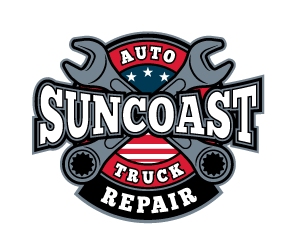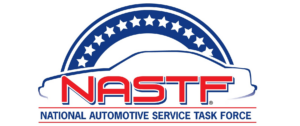Proud Member of NASTF


In the fast-paced world of transportation and logistics, maintaining a well-functioning vehicle fleet is crucial to the success of any business. Whether you operate a delivery service, a taxi company, or a construction firm, the smooth operation of your fleet is directly tied to your bottom line. This is where fleet maintenance comes into play.
Fleet maintenance is more than just changing oil and rotating tires; it is a comprehensive approach to ensuring that each vehicle in your fleet is operating at its optimum level of performance, efficiency, and safety. From regular inspections and preventive maintenance to timely repairs and replacements, fleet maintenance covers every aspect of keeping your vehicles on the road and your business running smoothly. In this article, we will explore the essential role of fleet maintenance and why it should be a top priority for every fleet owner or manager. So, buckle up and let’s dive into the world of fleet maintenance!
A well-maintained fleet is the backbone of any transportation business. The importance of fleet maintenance cannot be overstated, as it directly affects the overall efficiency, productivity, and profitability of your operations. Here are some key reasons why fleet maintenance should be a top priority:
1. Minimizing Downtime: Downtime can be a significant setback for any business. When a vehicle breaks down unexpectedly, it not only disrupts your daily operations but also leads to delays in deliveries or services. Regular fleet maintenance helps identify and address potential issues before they turn into major problems, reducing the risk of unexpected breakdowns and minimizing downtime.
2. Extending Vehicle Lifespan: Vehicles are a significant investment, and maximizing their lifespan is crucial to getting the most out of your investment. By implementing a comprehensive fleet maintenance program, you can ensure that your vehicles are well taken care of, leading to increased longevity. This means you can delay the need for expensive vehicle replacements, saving your business money in the long run.
3. Enhancing Safety: Safety should always be a top priority when it comes to fleet operations. Regular maintenance helps identify and address safety concerns, such as worn-out brakes or faulty steering systems, ensuring that your vehicles are safe to operate. This not only protects your drivers but also reduces the risk of accidents on the road, which can lead to costly legal issues and damage to your company’s reputation.
While fleet maintenance is essential, it comes with its fair share of challenges. Being aware of these challenges can help fleet owners and managers develop strategies to overcome them. Let’s take a look at some common challenges in fleet maintenance:
1. Limited Resources: Fleet maintenance requires skilled technicians, tools, and equipment. However, many businesses face resource limitations, such as a shortage of qualified personnel or a lack of funds for purchasing the necessary tools. Overcoming this challenge often involves finding creative solutions, such as outsourcing certain maintenance tasks or investing in cost-effective tools and equipment.
2. Tracking Maintenance Records: Keeping track of the maintenance history and schedules for each vehicle in your fleet can be a daunting task, especially if you have a large fleet. However, accurate maintenance records are crucial for maintaining compliance with industry regulations and for making informed decisions regarding preventive maintenance and repairs. Implementing a fleet management software can streamline this process and ensure that all maintenance records are easily accessible.
3. Balancing Maintenance Costs: Fleet maintenance can be costly, especially if you have a large fleet or if major repairs are needed. Finding the balance between proactive preventive maintenance and reactive repairs can be challenging, as you want to avoid unnecessary expenses while ensuring the longevity and safety of your vehicles. Implementing a preventive maintenance schedule and conducting regular inspections can help identify potential issues early on, reducing the need for expensive repairs.
To establish an effective fleet maintenance program, it is important to consider various key components. These components work together to ensure that your vehicles are properly maintained and that potential issues are addressed promptly. Let’s take a closer look at these key components:
1. Establishing a Preventive Maintenance Schedule: Preventive maintenance involves performing regular maintenance tasks based on predetermined schedules. This includes activities such as oil changes, filter replacements, and tire rotations. By establishing a preventive maintenance schedule, you can proactively address potential issues and extend the lifespan of your vehicles.
2. Conducting Regular Vehicle Inspections: Regular inspections are essential for identifying any mechanical or safety issues that may not be apparent during day-to-day operations. Inspections should cover various aspects of the vehicle, including brakes, tires, lights, and fluid levels. By conducting regular inspections, you can catch potential problems early on and address them before they cause major breakdowns or accidents.
3. Managing Vehicle Repairs and Breakdowns: Despite preventive maintenance efforts, breakdowns and repairs are inevitable. Having a well-defined process for managing repairs and breakdowns is essential to minimize downtime and ensure a swift resolution. This may involve establishing relationships with reliable repair shops, having spare parts readily available, and implementing a system for tracking repair progress.
4. Implementing a Fleet Management Software: A fleet management software can revolutionize the way you manage your fleet maintenance activities. These software solutions enable you to track maintenance schedules, generate comprehensive reports, and streamline communication between drivers, technicians, and managers. By automating many aspects of fleet maintenance, you can improve efficiency and reduce administrative burdens.
5. Training and Educating Fleet Maintenance Personnel: Skilled and knowledgeable technicians are crucial for effective fleet maintenance. Providing regular training and education to your maintenance personnel ensures that they stay up-to-date with the latest industry practices and technologies. This not only enhances the quality of maintenance work but also fosters a culture of continuous improvement within your maintenance team.
6. Outsourcing Fleet Maintenance Services: For businesses with limited resources or specialized maintenance needs, outsourcing fleet maintenance services can be a viable option. Outsourcing allows you to leverage the expertise and experience of professional maintenance providers, ensuring that your vehicles receive the highest level of care. It also frees up your internal resources to focus on core business activities.
While fleet maintenance comes with costs, it is important to consider the long-term cost-effectiveness of a well-maintained fleet. Here are some ways in which fleet maintenance can save your business money:
1. Reduced Fuel Consumption: Properly maintained vehicles tend to be more fuel-efficient. Regular tune-ups, clean air filters, and properly inflated tires can significantly reduce fuel consumption, leading to substantial cost savings over time.
2. Avoidance of Expensive Repairs: Addressing potential issues early on through preventive maintenance can help avoid costly breakdowns and major repairs. By investing in regular maintenance, you can catch minor problems before they escalate into more significant and expensive issues.
3. Extended Vehicle Lifespan: Well-maintained vehicles have a longer lifespan, reducing the need for frequent replacements. This can save your business the significant cost of purchasing new vehicles and allows you to maximize the return on your initial investment.
4. Improved Safety and Reduced Insurance Costs: Maintaining a safe fleet can lead to lower insurance premiums. By demonstrating a commitment to fleet maintenance and safety, you can potentially negotiate lower insurance rates, resulting in further cost savings.
Fleet maintenance is an essential aspect of running a successful transportation business. By implementing a comprehensive fleet maintenance program, you can minimize downtime, extend the lifespan of your vehicles, and enhance overall safety. While there may be challenges in terms of resources and costs, the long-term benefits of fleet maintenance far outweigh the initial investment. So, make fleet maintenance a top priority and enjoy the smooth operation of your vehicle fleet.




